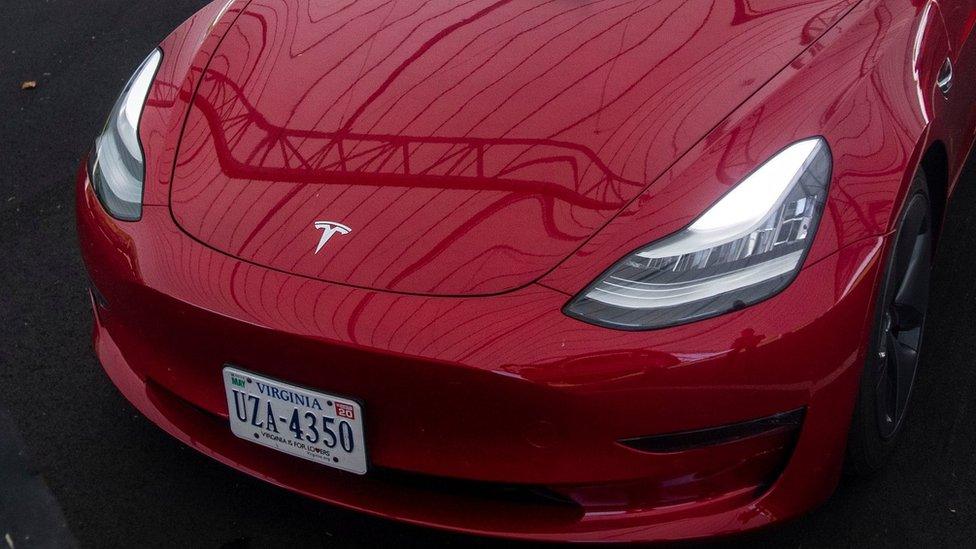Tesla Autopilot design 'led to' crash
- Published

The design of Tesla's Autopilot system and "driver inattention" led to a crash in 2018, according to a US .
It said Tesla's semi-autonomous driving system "permitted driver disengagement from the driving task", resulting in the crash, on a California motorway.
Tesla says Autopilot "requires active driver supervision" and drivers should keep their hands on the steering wheel.
Nobody was hurt in the January 2018 crash.
According to the report, Autopilot was activated at the time of the crash and the driver was not holding the wheel.
The car was following the vehicle in front but the lead vehicle changed lanes to the right to avoid a parked fire engine obstructing the lane.
The Tesla accelerated, detecting the fire engine in its path only about 0.49 seconds before the crash.
The car's collision-warning alarm was activated but the car did not brake and hit the fire engine at about 30mph (48km/h).
The NTSB said the probable cause of the crash had been the "driver's lack of response to the fire truck parked in his lane, due to his inattention and over-reliance on the car's advanced driver assistance system".
It said the design of Tesla's Autopilot system had allowed the driver to "disengage from the driving task", although it acknowledged the driver had used the technology "in ways inconsistent with guidance and warnings from Tesla".
An investigation into a separate fatal Tesla crash is still ongoing.
The company publishes a to highlight crashes involving Autopilot are uncommon.
In a statement, Tesla said: "Tesla owners have driven billions of miles with Autopilot engaged, and data from our quarterly Vehicle Safety Report indicates that drivers using Autopilot remain safer than those operating without assistance.
"While our driver-monitoring system for Autopilot repeatedly reminds drivers of their responsibility to remain attentive and prohibits the use of Autopilot when warnings are ignored, we've also introduced numerous updates to make our safeguards smarter, safer and more effective across every hardware platform we've deployed.
"Since this incident occurred, we have made updates to our system including adjusting the time intervals between hands-on warnings and the conditions under which they're activated."
Insurance
Last week, Tesla launched a car insurance service for drivers in California, the company's biggest market for its electric vehicles.
It said it could offer its customers lower rates because of the safety features built in to its cars.
"The data is there, it's all there, cameras in and all around your car, all of the data points are there," said Matthew Edmonds, Tesla's head of insurance.
The company said it was not currently using "data from individual vehicles, such as GPS or vehicle camera footage".
Instead, it would leverage "anonymised, aggregated" statistics to demonstrate the safety record of its cars.
- Published17 May 2019